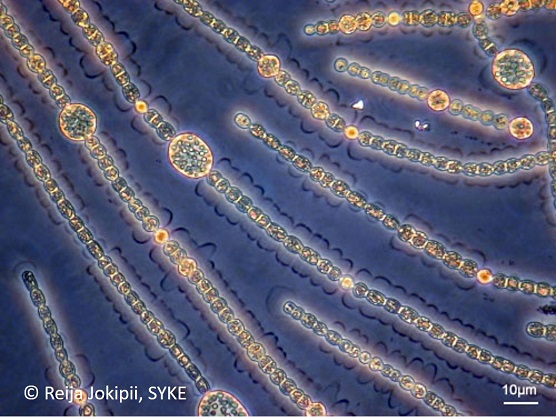
Dolichospermum (blue green algae). Photo: Reija Jokipii.
Background
Ultrasound can prevent cyanobacteria from forming surface blooms. The method has rarely been studied in natural waters. However, in laboratory experiments ultrasound has been found to have harmful effects, not only on cyanobacteria, but also on other phytoplankton and on zooplankton. Changes in plankton communities could be reflected in the functioning of the food web of a water body and affect its ecology. In summer 2021, the capability of ultrasound in preventing the formation of cyanobacterial blooms was tested for the first time in Finland by local actors in a small pond (Ahvenlampi in Pieksämäki, Finland). At the same time, the UltraPlan project investigated the ability of an ultrasound-producing raft to control cyanobacterial blooms and the raft’s effects on phytoplankton and zooplankton communities as well as on water quality.
UltraPlan project investigated:
- Can ultrasound prevent or reduce cyanobacterial blooms?
- Does ultrasound have adverse impacts on eukaryotic phytoplankton as well as on zooplankton communities?
- Does ultrasound have effects on water quality?
More information
Laura Härkönen, Suomen ympäristökeskus SYKE, firstname.lastname(at)syke.fi
Kristiina Vuorio, Suomen ympäristökeskus SYKE, firstname.lastname(at)syke.fi